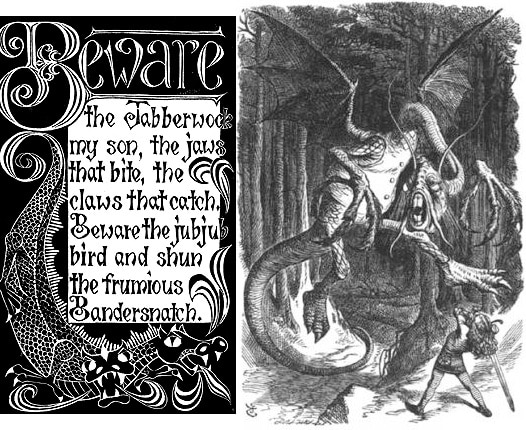When the English language didn’t convey the story Lewis Carroll wanted to tell, he made up his own words. Thus, the Jabberwocky “came whiffling through the tugley wood” to face the vorpal blade.
Content writers can’t start throwing around nonsense words — no matter how well they convey the message. There are style guides and grammar requirements and clients who might frown on writers ignoring such things. However, expert writers can take a page from Carroll’s nonsense writing strategy to write creative, compelling blog posts and product descriptions. The goal when using some of the following tips is to write with sense, but also with enjoyment, interest, and passion.
Always Alliterate At Intervals
Alliteration is pleasing in general to readers when used sparingly, because it creates flow and memory. As with any writing device, time alliteration carefully and use it when casual tones or humor are appropriate. Don’t put a phrase such as “dueling doctors debate medical advice” in an academic medical article, but do include “pink pansy pattern” in the description of children’s comforter. Match the style of the phrase with the topic; a high-end cologne description might include phrases such as “distinguished with daring” and “effortlessly elegant.”
Use Surprising Word Combinations
Freelancers who produce content for a living tend to specialize in certain areas, and that means covering similar topics repeatedly. Consider a project to write 1,000 mirror descriptions for a furniture site. While it’s true there are only so many ways to say something is oval, round, or rectangular, it’s also true that after describing a couple hundred similar products, most writers fall into the habit of using certain phrases. Battle that compulsion by writing the phrases on a notepad. Then, mix and match words from various common phrases to change up writing and avoid plagiarizing yourself.
Require the Object to Act
Every writer knows about passive voice, but it’s easy to fall into the habit of writing about things in a flat manner. The brilliance of Lewis Carroll is that he saw a unique world peopled with everyday things that he made different. A caterpillar blew smoke rings, mushrooms walked, and cakes turned Alice into a giant. While content writing is rarely as free as Lewis Carroll, you can still require the objects in your content to take action—especially in marketing writing. What does the item do for the reader? Don’t list it—tell a story about it.
Ask Yourself What You Aren’t Supposed to Write
If you feel like you’re in a rut with writing or you’re having trouble creating unique content for a client, ask yourself, “What am I not supposed to write?” Create a list of rules – write as many rules for yourself as you can, even if some of them are wild or silly. Then, go back through each rule. Why is it a rule? Is it really a rule? How could you break the rule without breaking style guide or client requirements?
Breaking rules is what all good writers do. It’s how Lewis Carroll wrote, and it’s how you can write too. Just remember — to break the rules, you have to know what they are.
Sarah S writes a bunch of nonsense on her Facebook page and personal blog, but she promises never to deliver inane content to clients. Some people call her the Mad Hatter, though, so she can’t promise there won’t be an occasional bit of whimsy.






